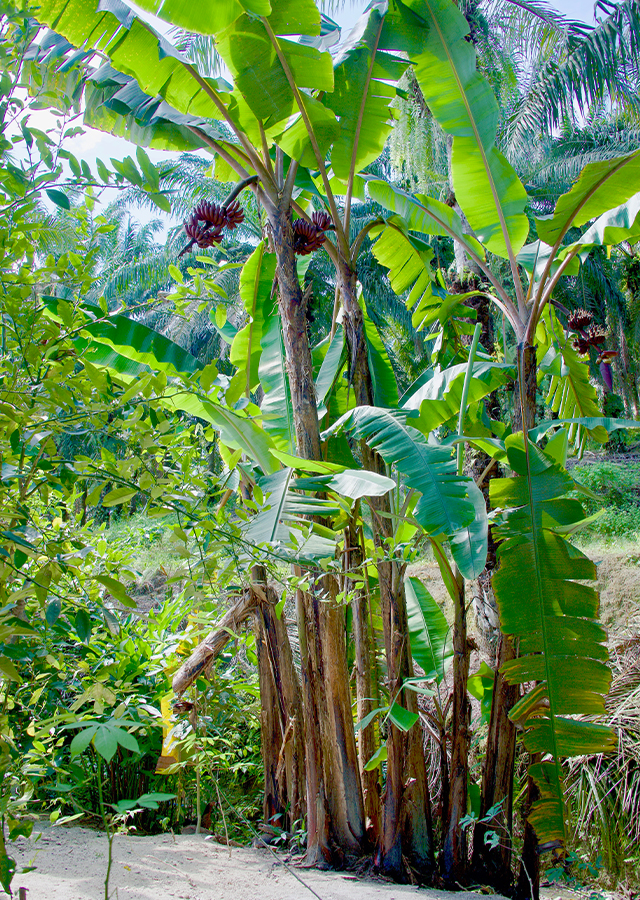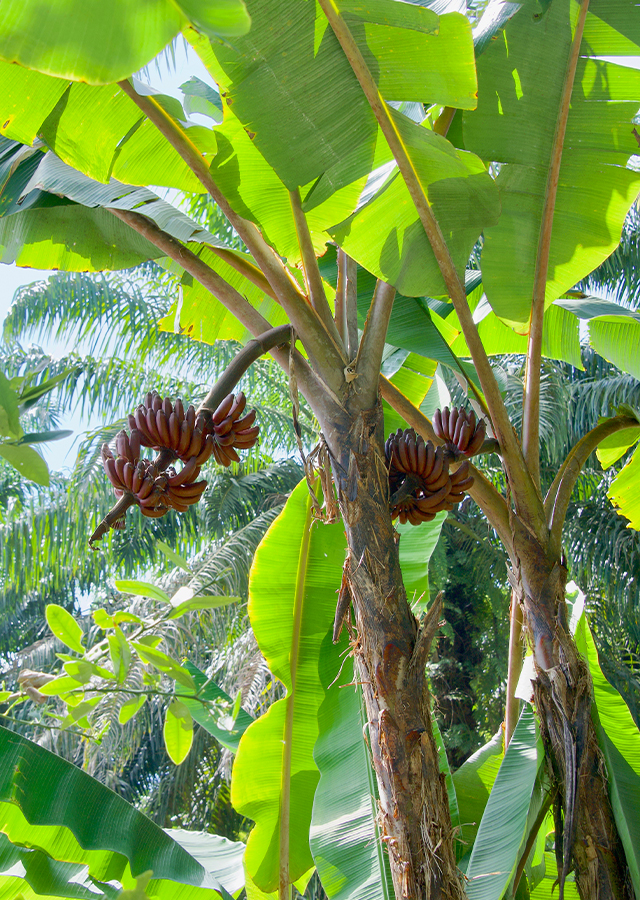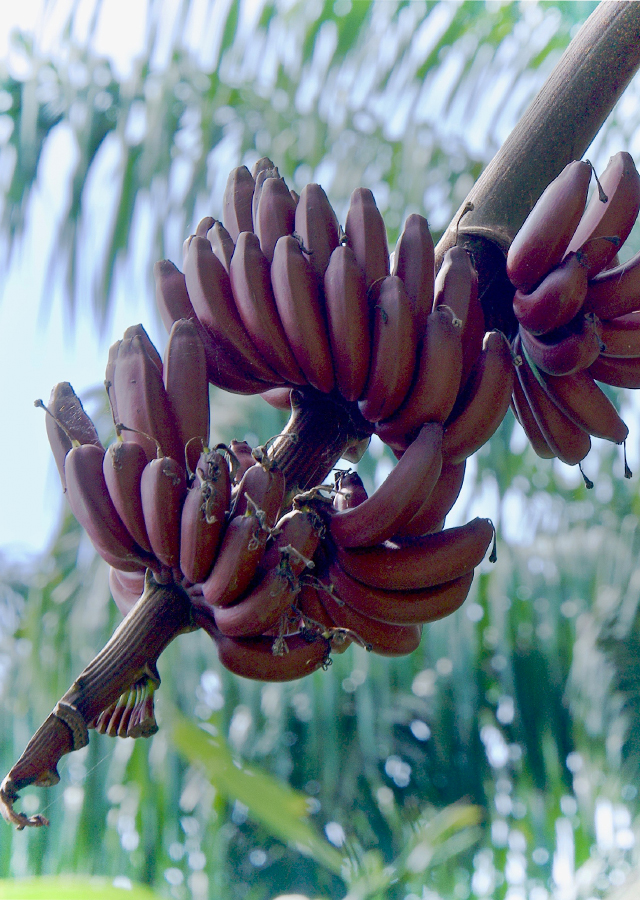Red Banana
Musa acuminata cv. Raja Udang (AAA)
Musaceae
Location in our garden
Palm



Synonym
Habitus
Herbaceous. A perennial plant with red–green shiny pseudostem that grows up to 3 – 4.5 m in height.
Part Used
Fruit
Growing Requirements
Need Shade
Habitat
Terrestrial
Overview
This banana originated in the West Indies and Central America. Due to its very sweet with raspberry-ish taste, this banana is favoured in Central America to be served in desserts, fruit salads, or to be eaten raw. Compared to the common yellow bananas, red bananas are richer in their vitamin C and potassium contents.
Vernacular Names
Hong guo jiao (Chinese), Cubabanaan (Dutch), Banane de Cuba (French), Kuba banane (German), Chenkadali (India), Baracoa (Japanese), Pisang tembaga (Sabah-Malaysia)
Agroecology
Red bananas are adapted to the warm and humid climates of tropic and subtropic regions, between latitudes 30 °N and 30 °S. It is very sensitive to frost and will die at temperatures below −2 °C. It prefers areas with mean annual rainfalls of over 2,000–4,000 mm but will grow in areas with 500 mm rainfall with supplemental irrigations and fertile soils. The plant does best in full sun and in flat lowlands, tolerates a wide range of soils but well-drained, fairly-deep, fertile loams are preferable. It also tolerates a wide range of soil acidity, but pH 5.0–7.5 is optimal.
Morphology
- Roots - rhizomous, production of roots from multiple nodes, and production of clonal shoots.
- Stems - red-green shiny pseudostem, 3–4.5 m, sap milky and pinkish-red or purplish-red petioles and midribs.
- Leaves - broad, pinkish-red or purplish-red petioles and midribs, sap milky.
- Flowers - unisex. Male flower tepal cream with pinkish pigmentation. Female flower, yellow tepals, with straight style, yellow stigma and ovary cream with purplish-red pigmentation. Inflorescence emerges at the top of the plant, pendant with 58–62 cm long, hairy peduncle, complete with female, neuter and male flowers.
- Fruits - plump, orange-red, red, pink or purplish-red when mature flesh cream to pale orange yellow when ripe, rounded in cross-section and blunt-tipped. Number of fruits per hand up to 17, size of fruit 16–20 cm. Compared to the yellow bananas, the fruits are smaller, plumper, softer and have a unique flavour with the taste of raspberries.
Cultivation
The only way of propagation is by separating suckers from the parent plant.
Chemical Constituents
Aliphatic esters, elemicin, acetates, tannins, steroids, alkaloids, terpenoids, coumarins, and phenolic compounds.
Traditional Medicinal Uses
Its reported pharmacological activities include antioxidant, antidiabetic, immunomodulatory, hypolipidemic, anticancer, and antimicrobial especially anti-HIV.
- It is used for treating diabetes mellitus, strengthening the immune system, relieving heart problems, improving eye and skin health, alleviating digestive problems, and used to help combat smoking.
- According to experts in India, those suffering from anemia should consume 2 to 3 bananas every day to improve their RBC (Red Blood Cells) count.
- In India, it is effective in weight loss, improves skin quality, good for hair and stress buster.
Part Used
Reference Sources
- Lim, T.K. (2012) Edible Medicinal And Non Medicinal Plants: Volume 3, Fruits. Springer, Dordrecht.
- Growables. (2020). Banana Varieties. https://www.growables.org/information/TropicalFruit/bananavarieties.htm#AAA.
- Ehler, J.T. (2020). Bananas - Red Bananas. http://www.foodreference.com/html/art-red-bananas.html.


